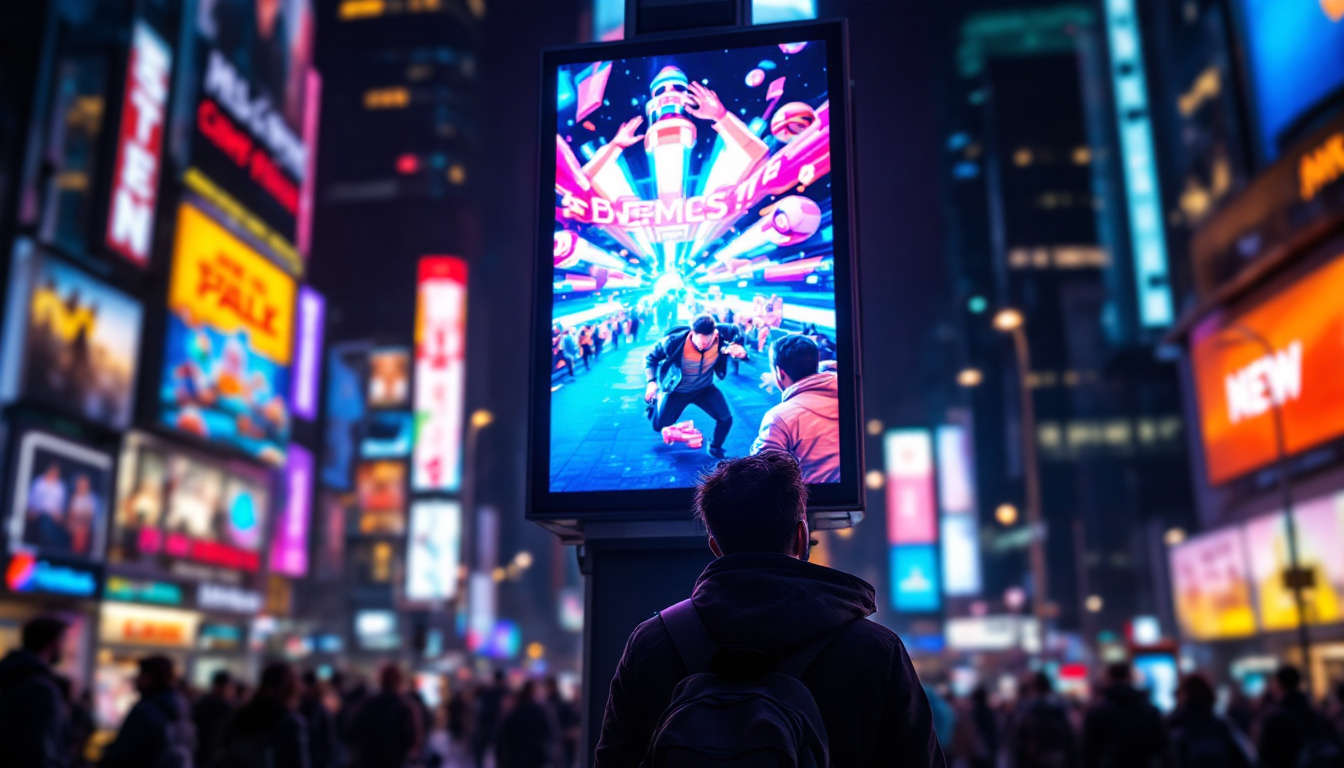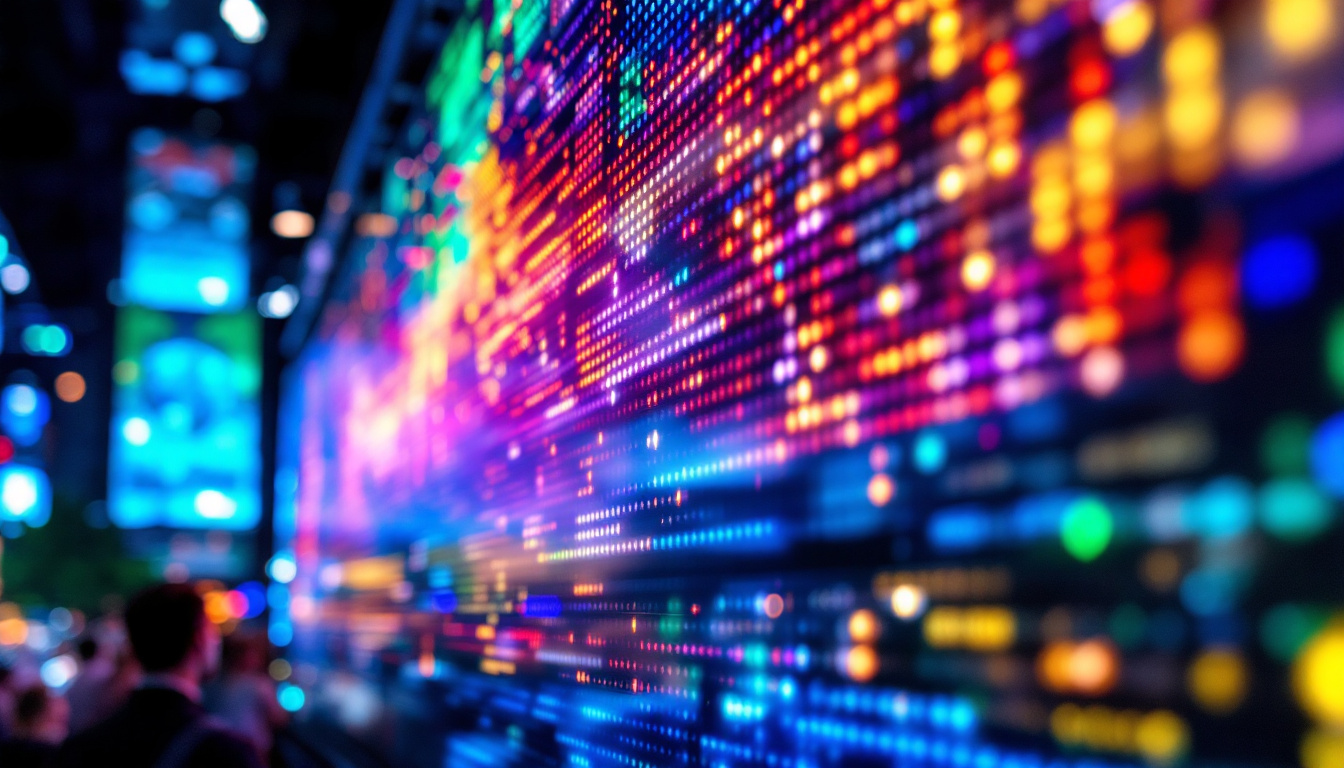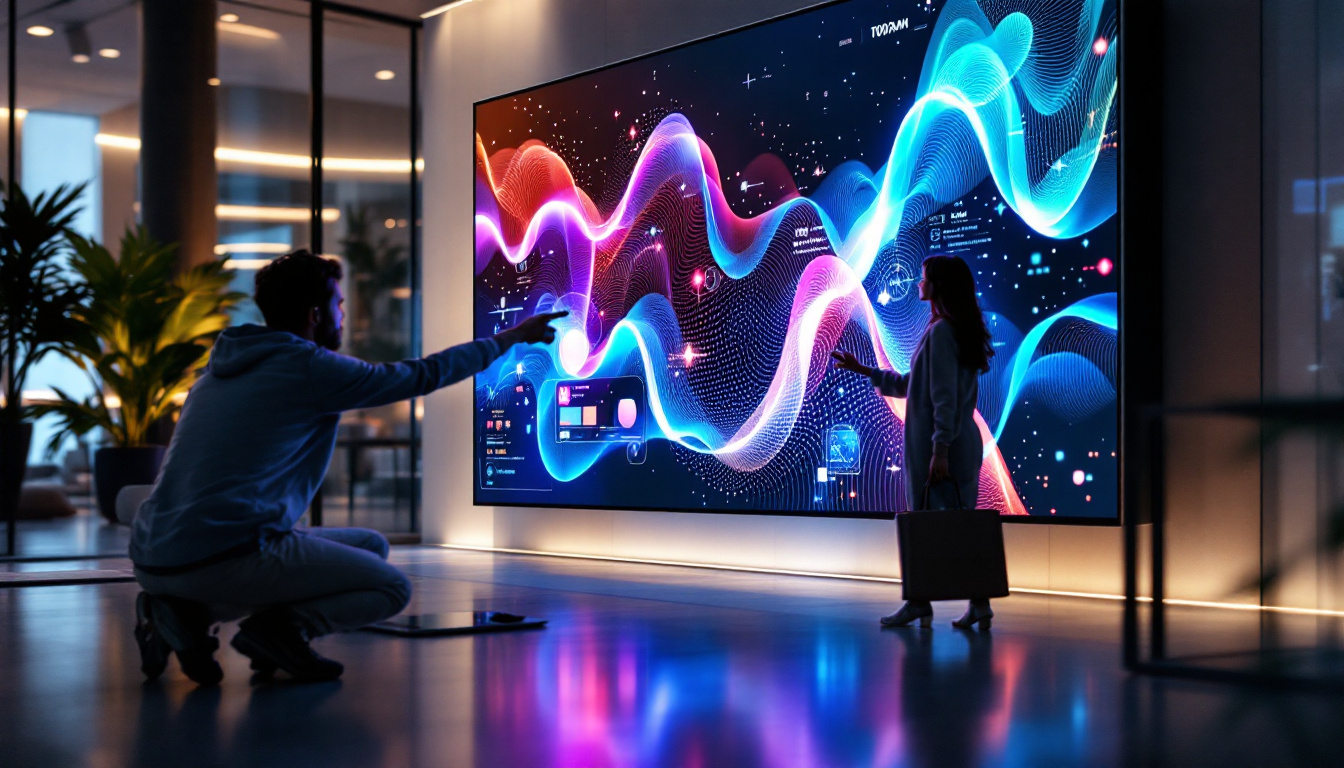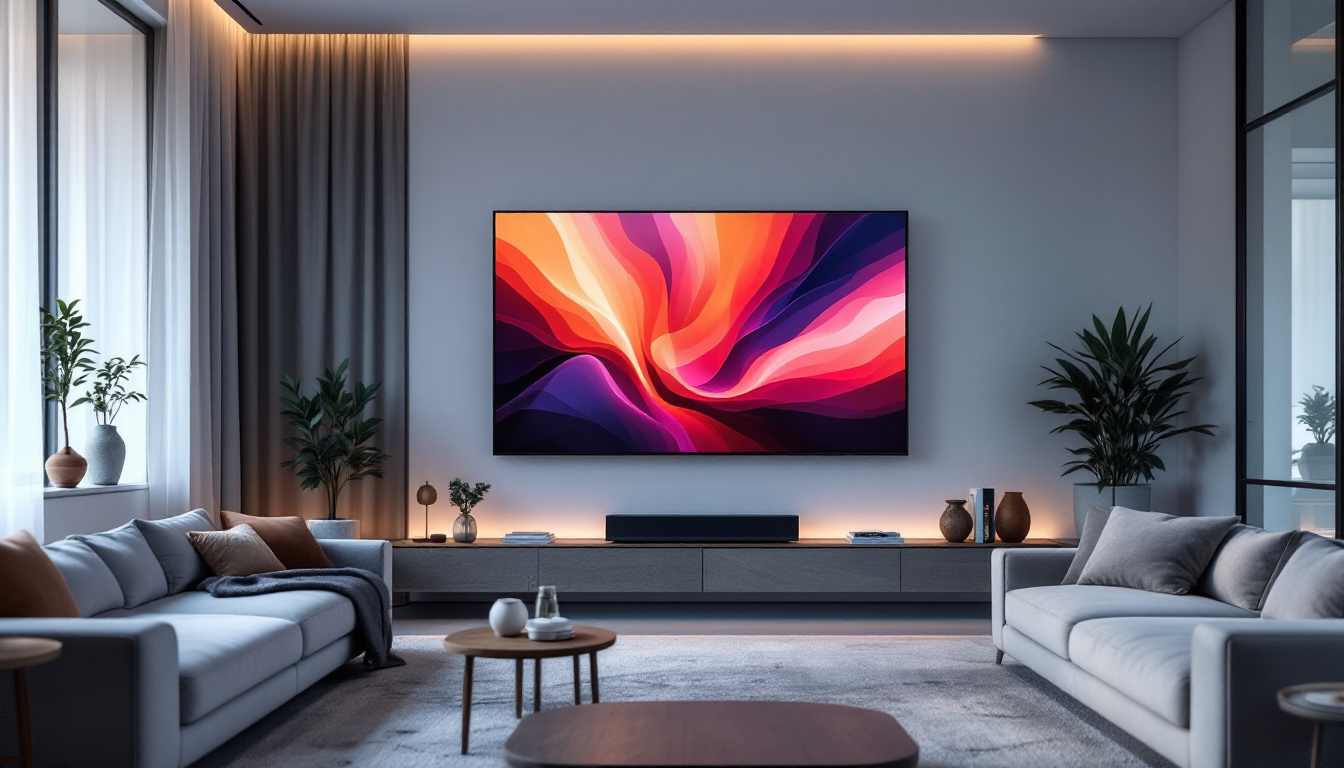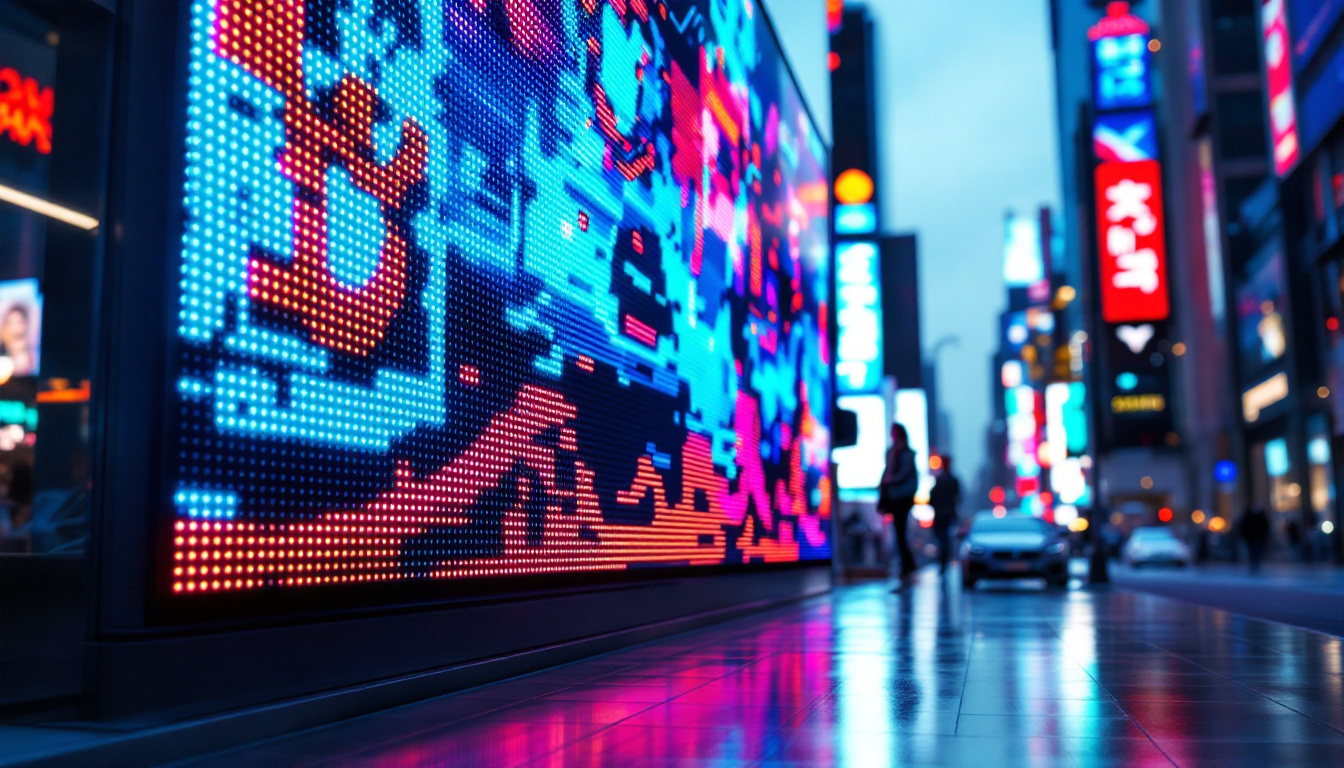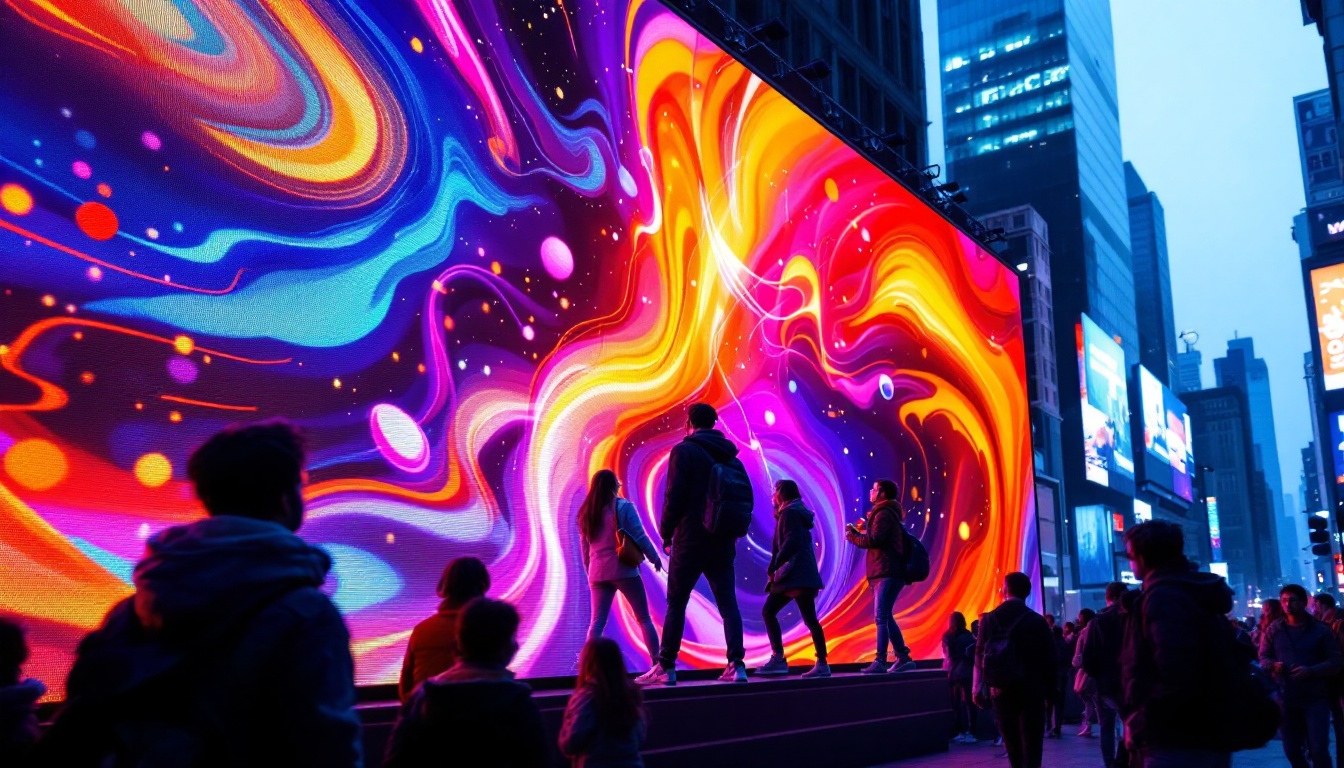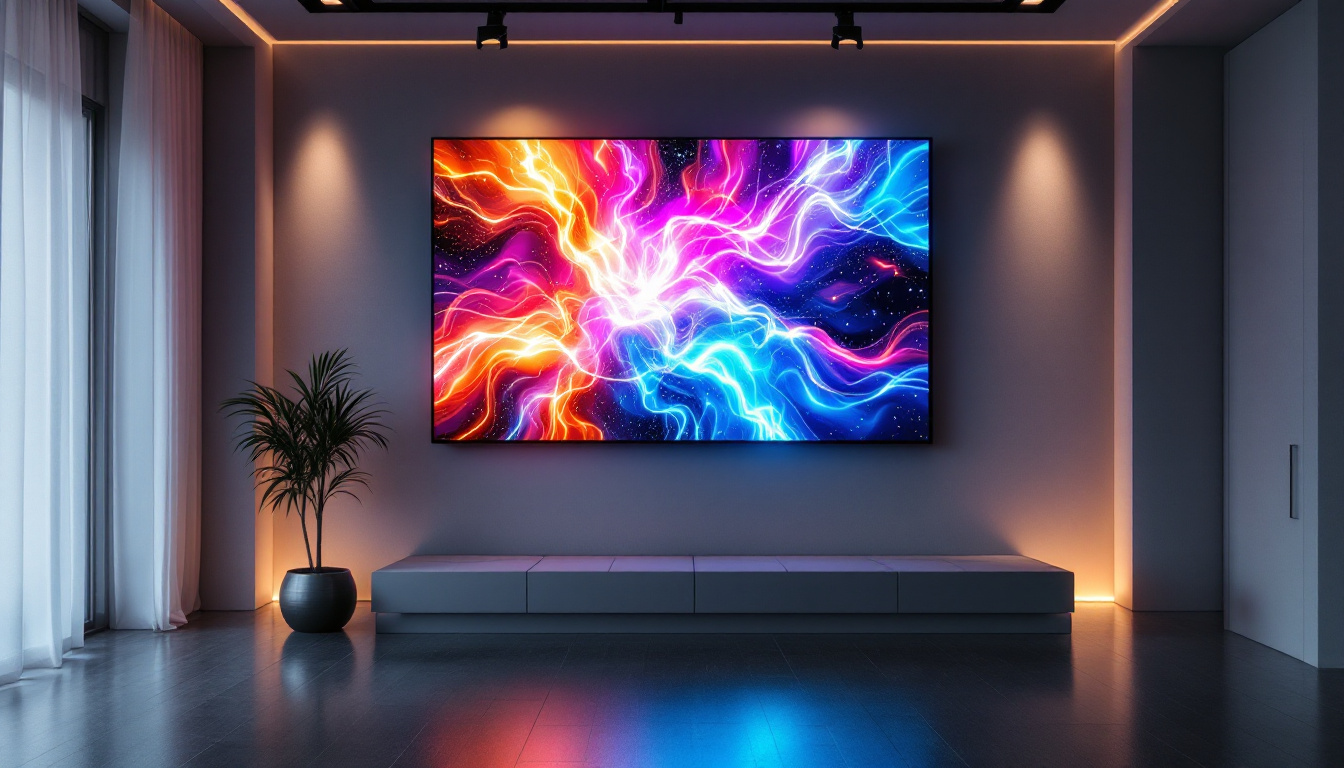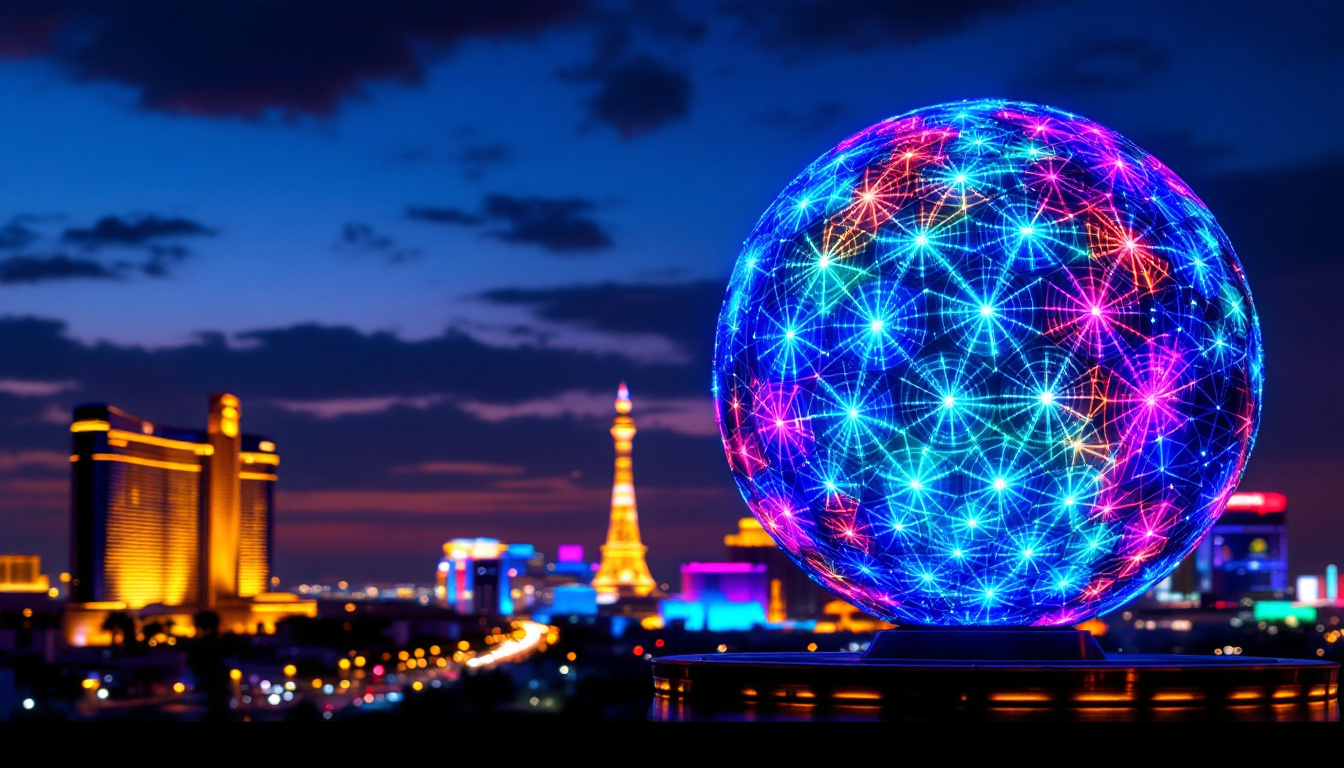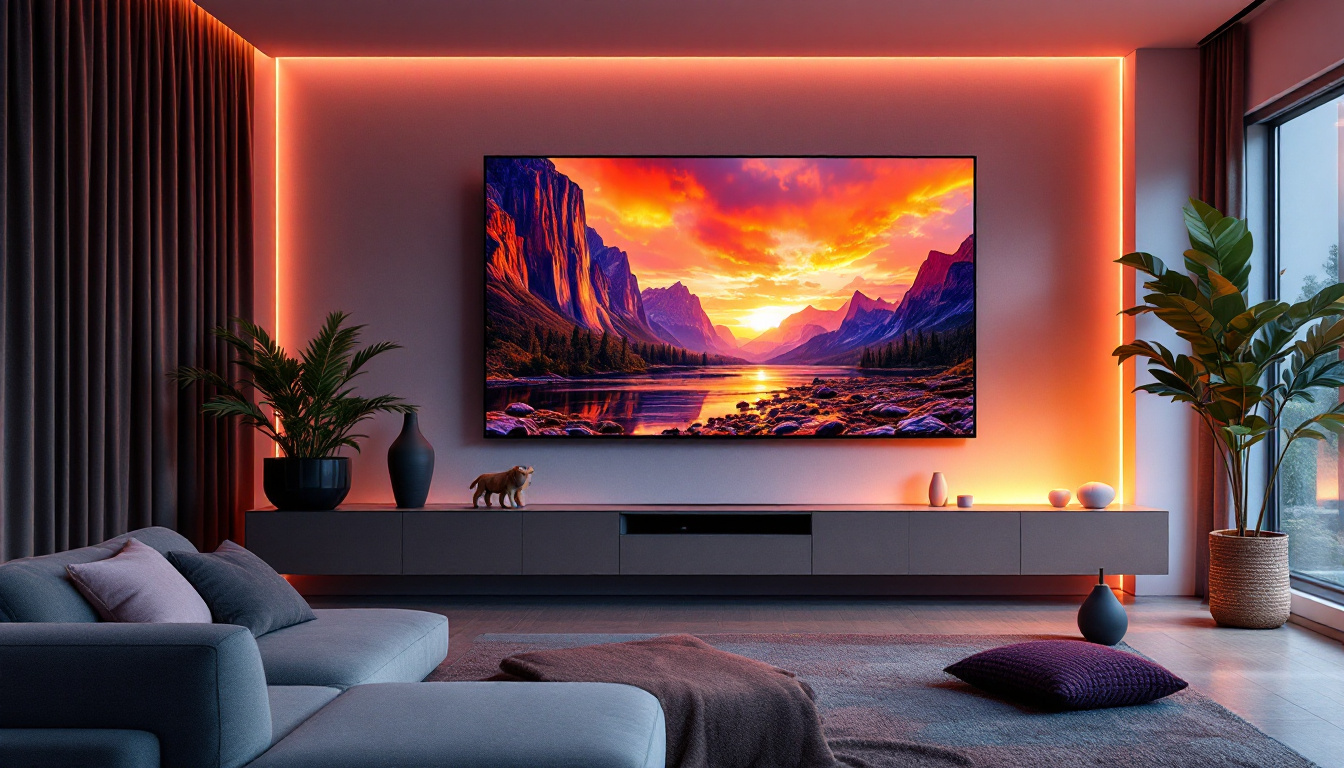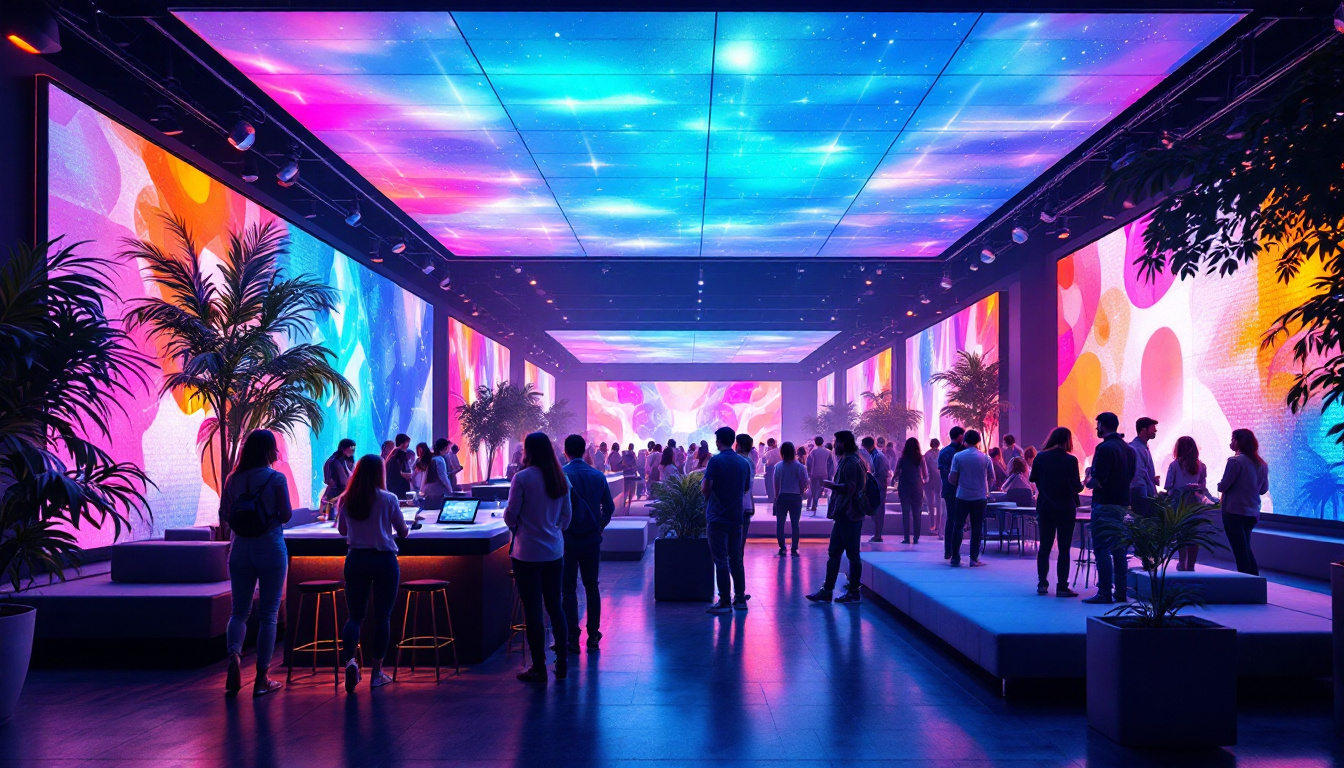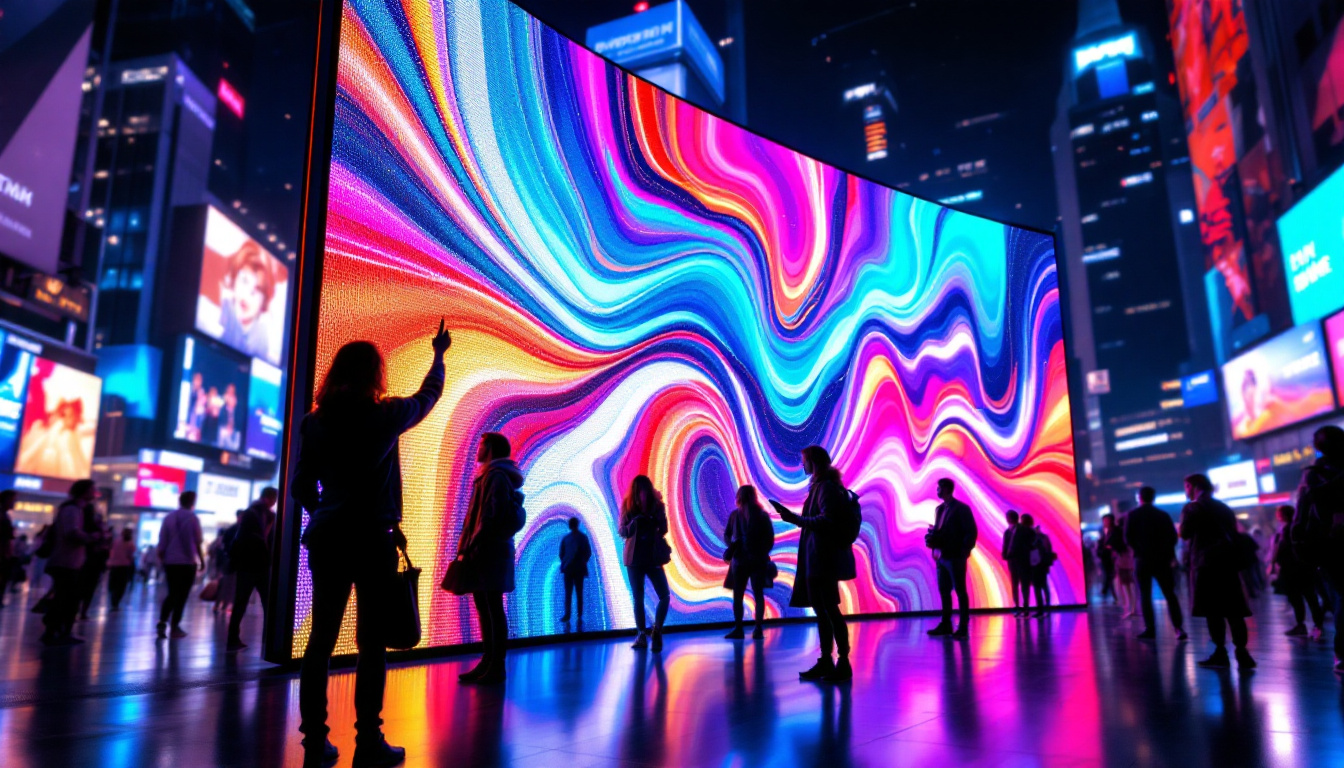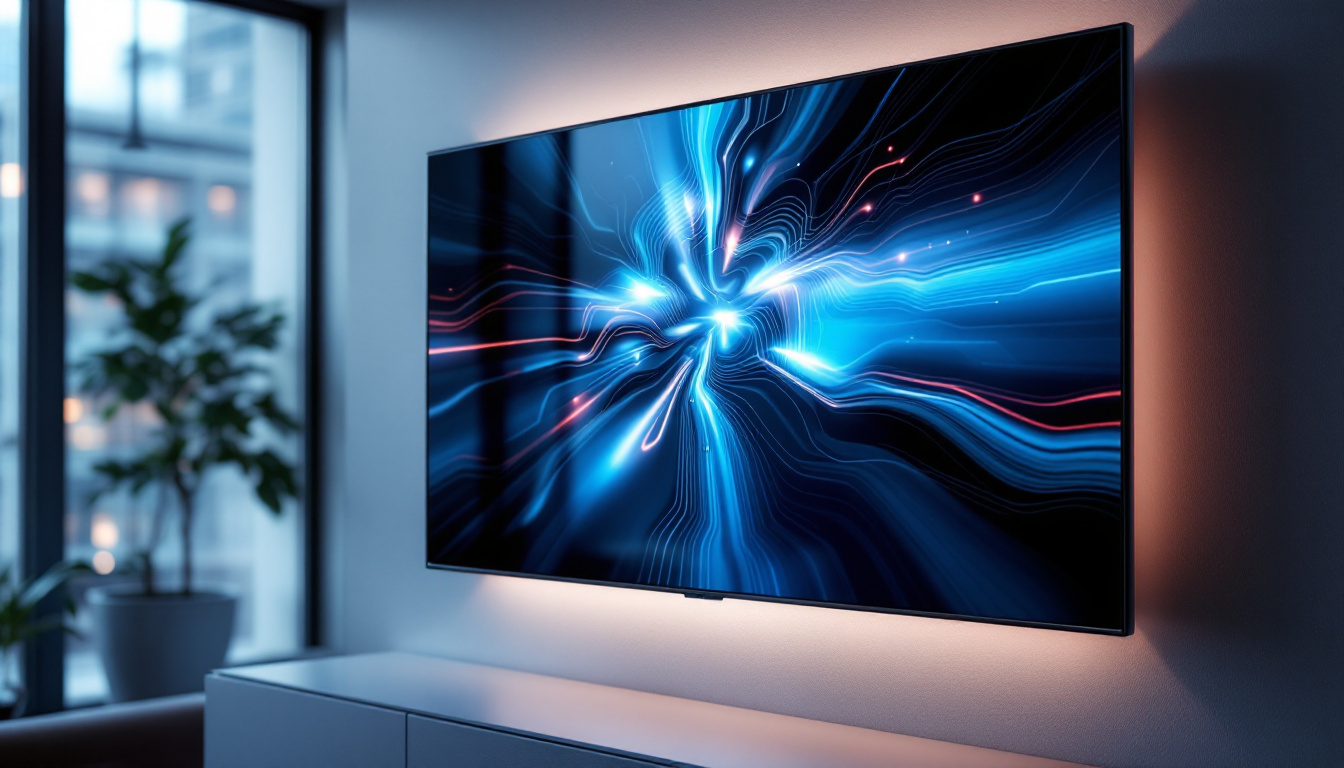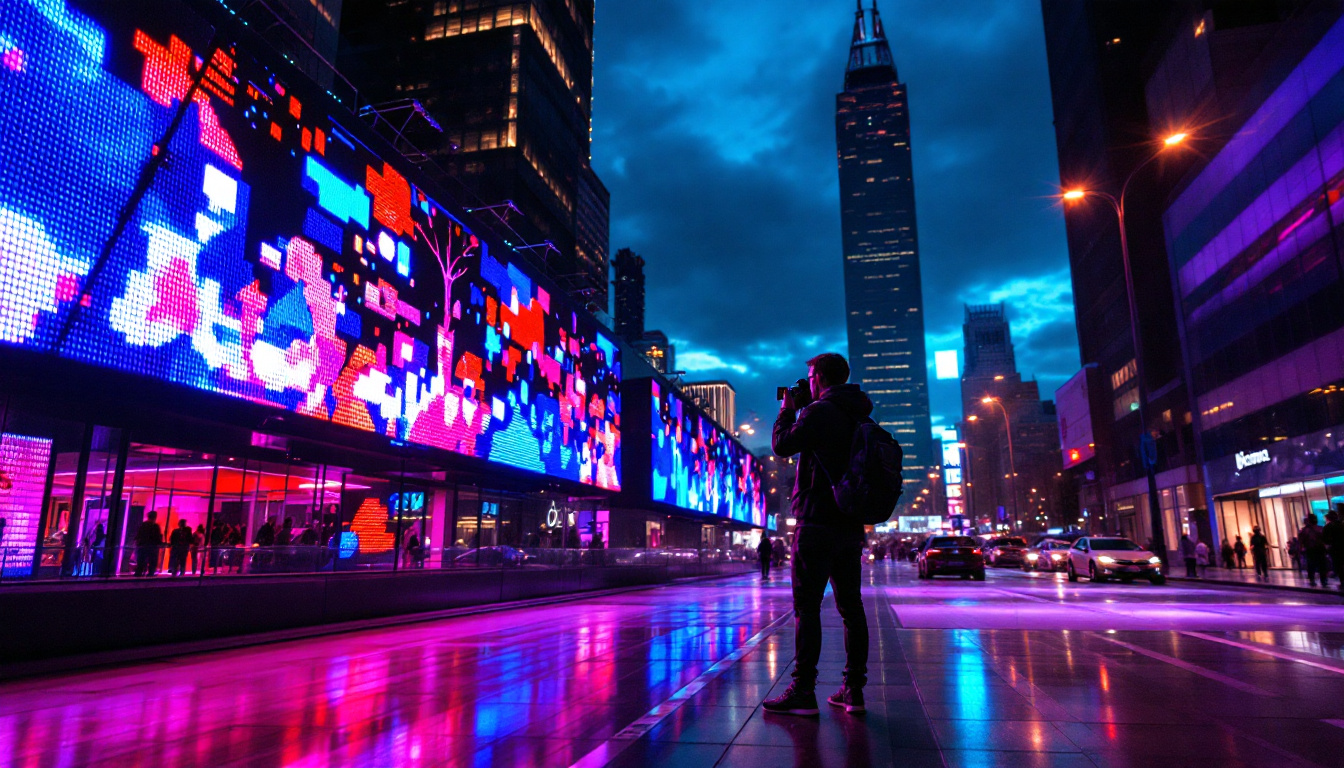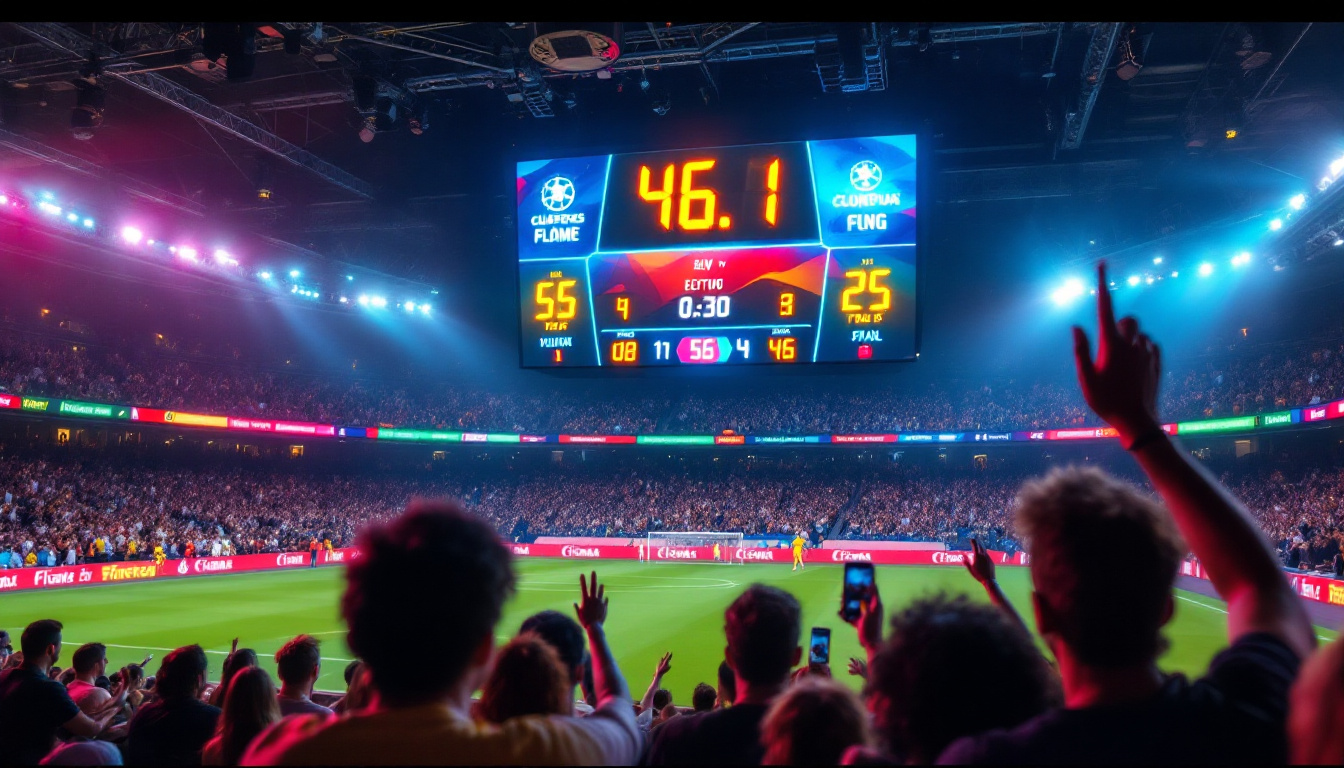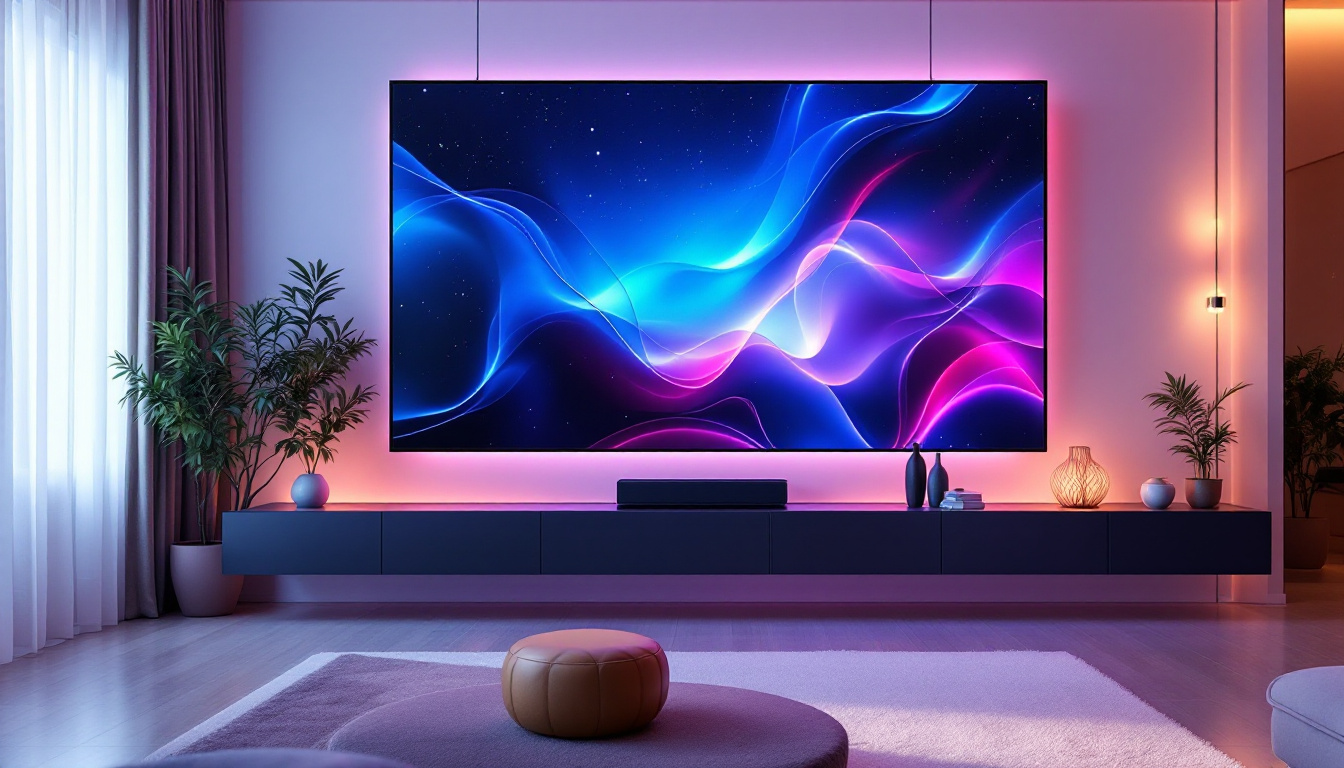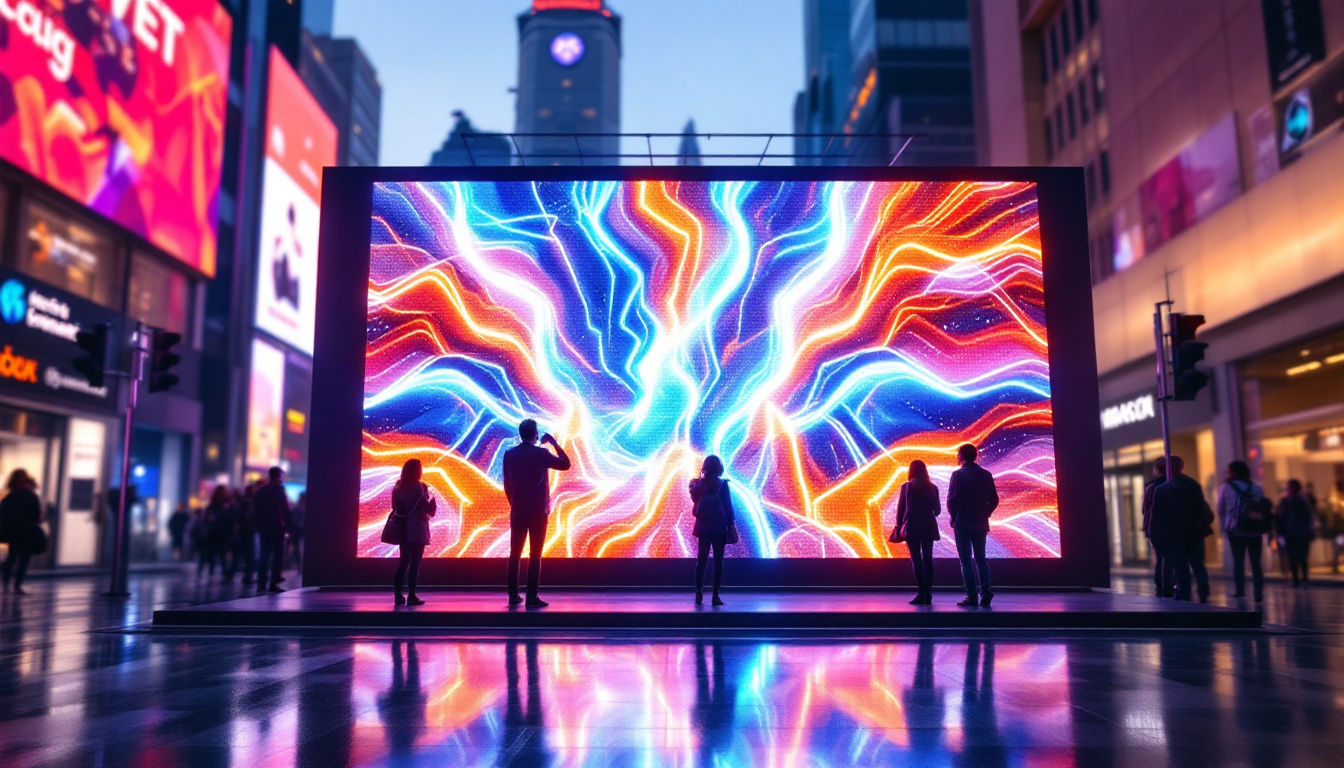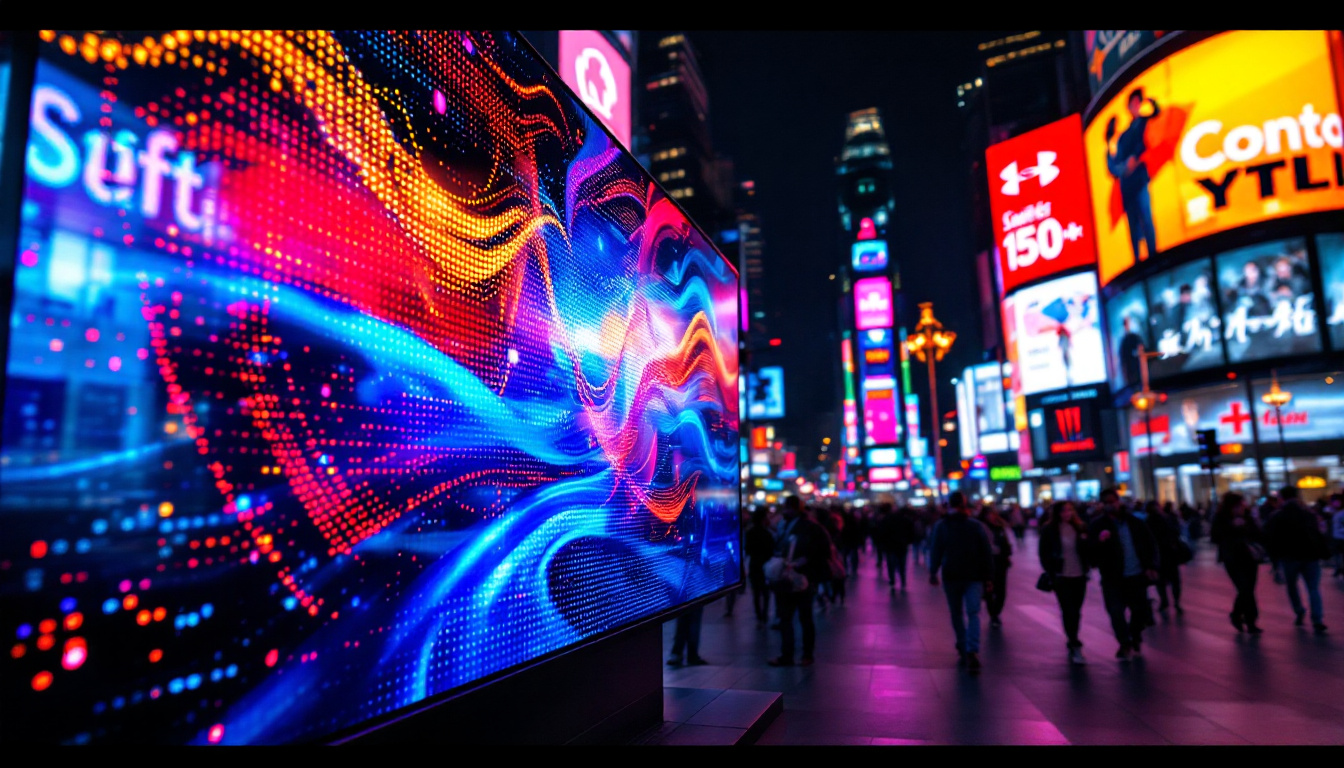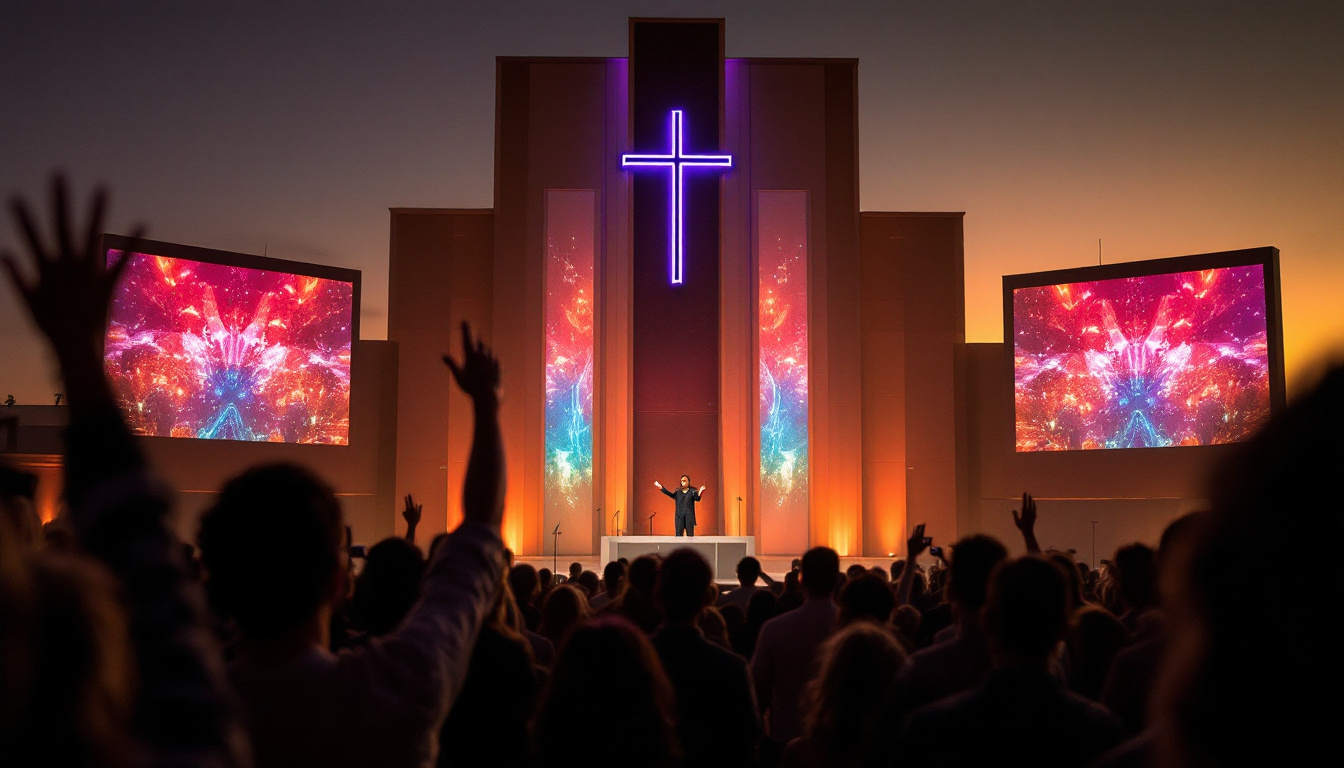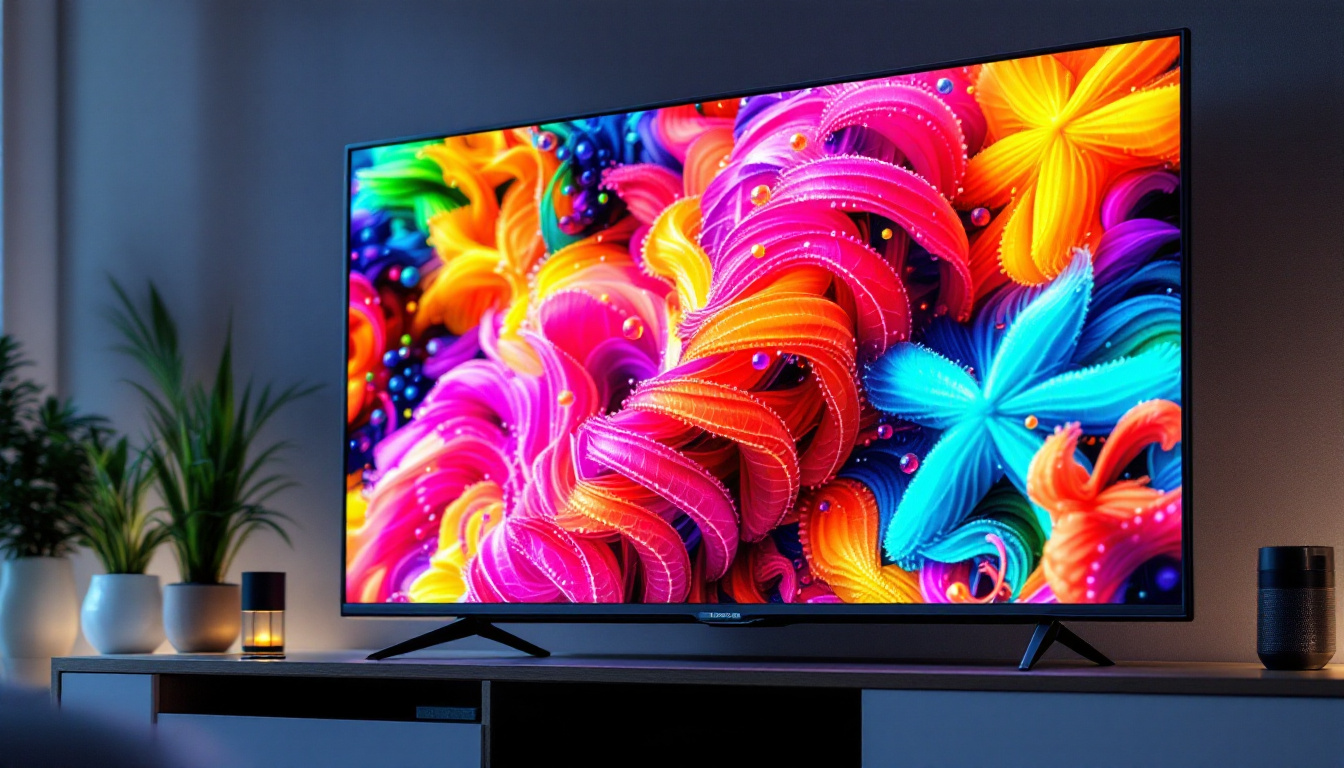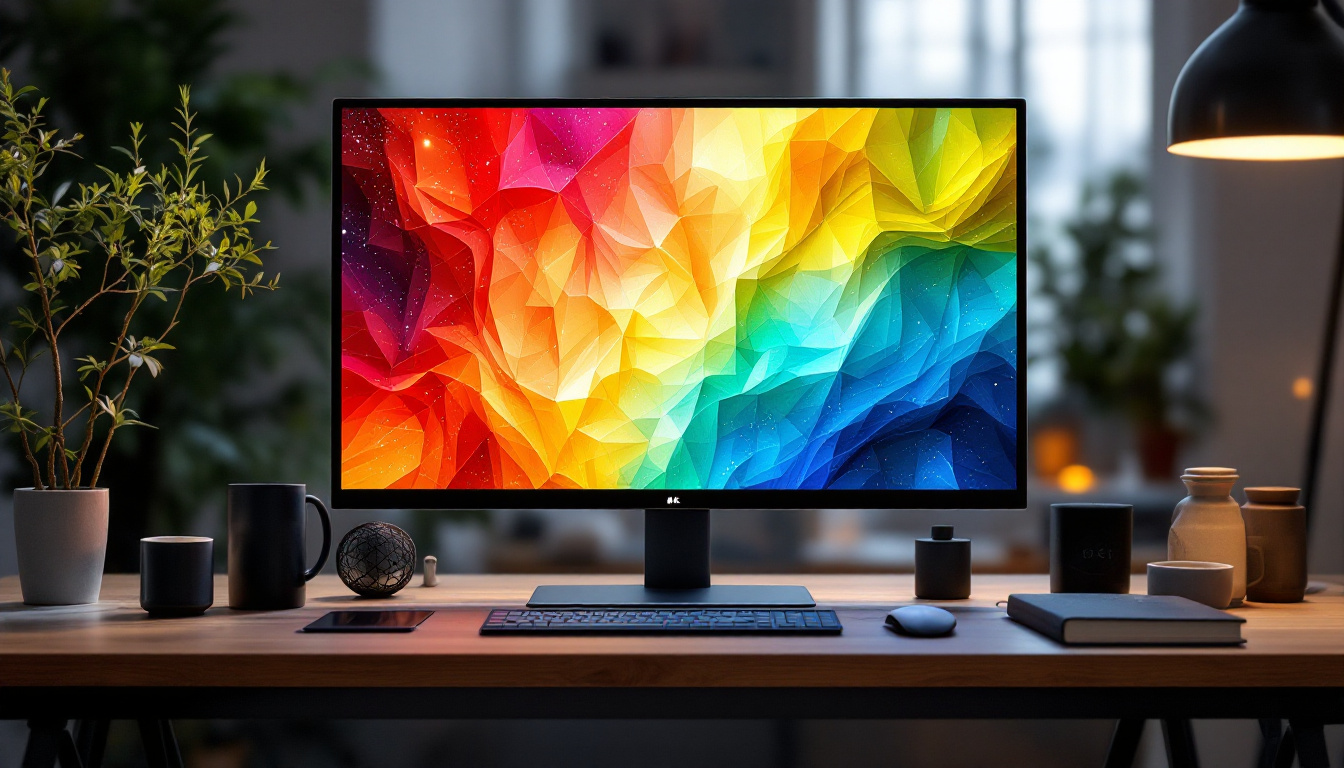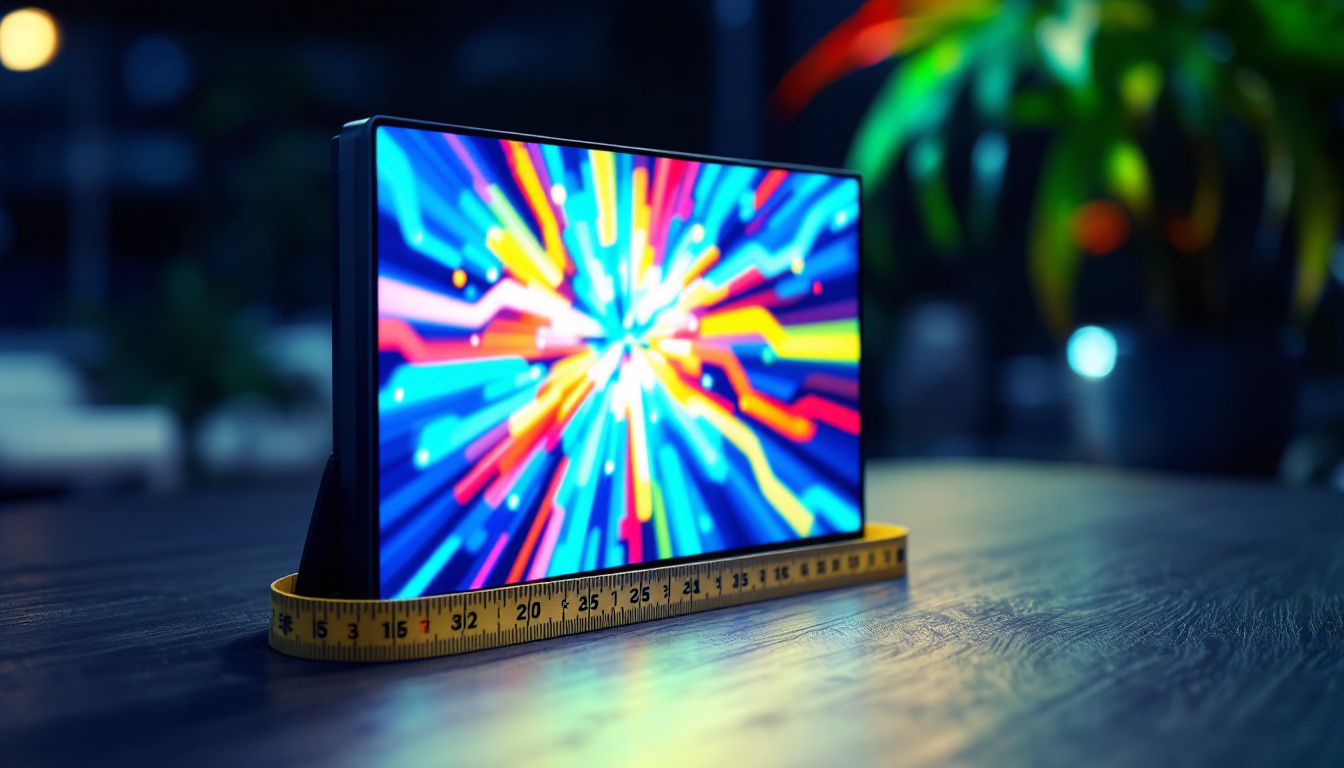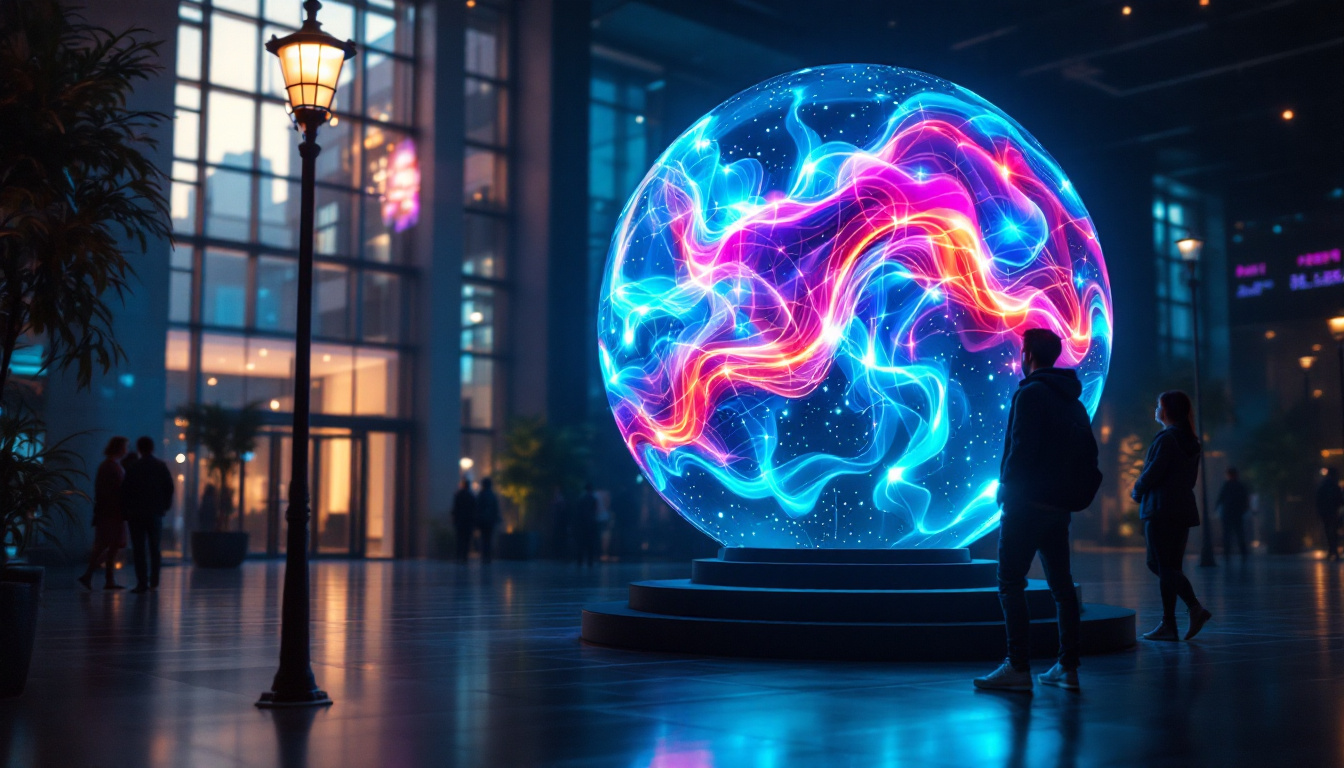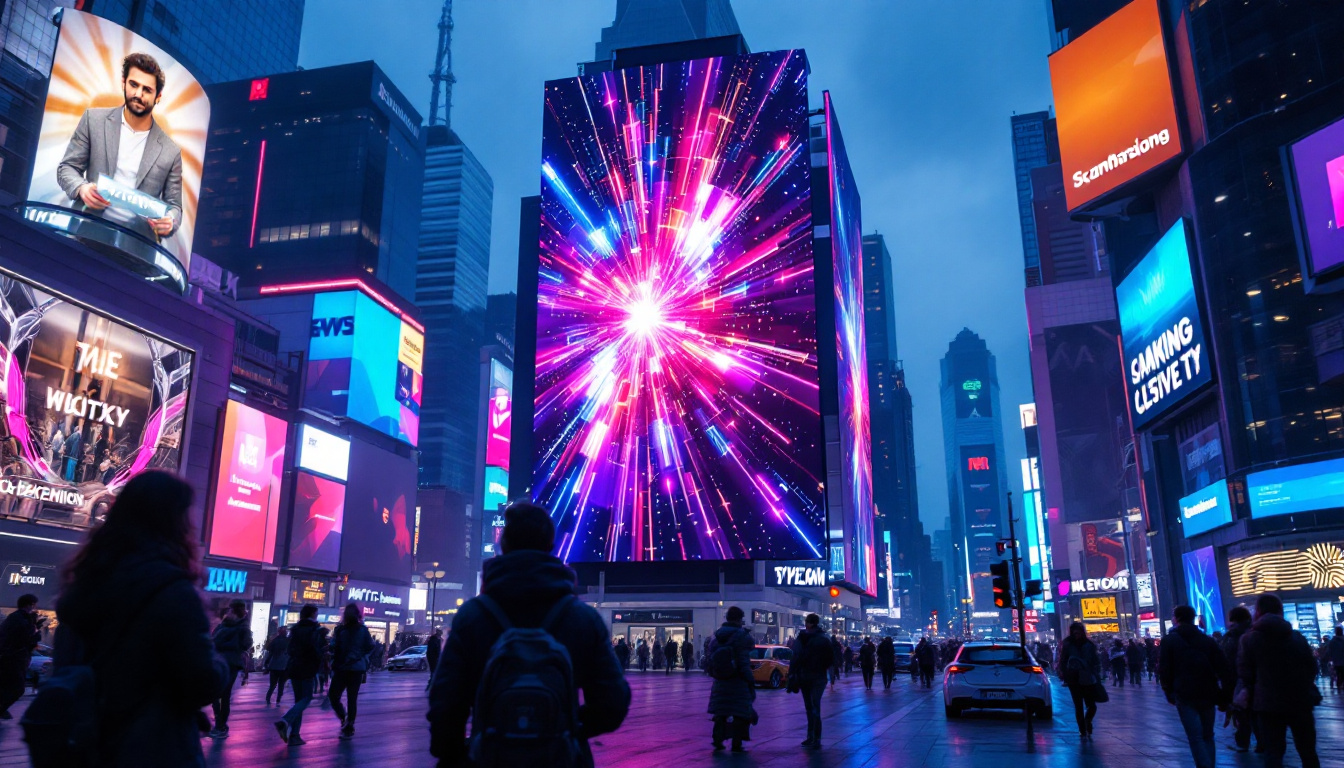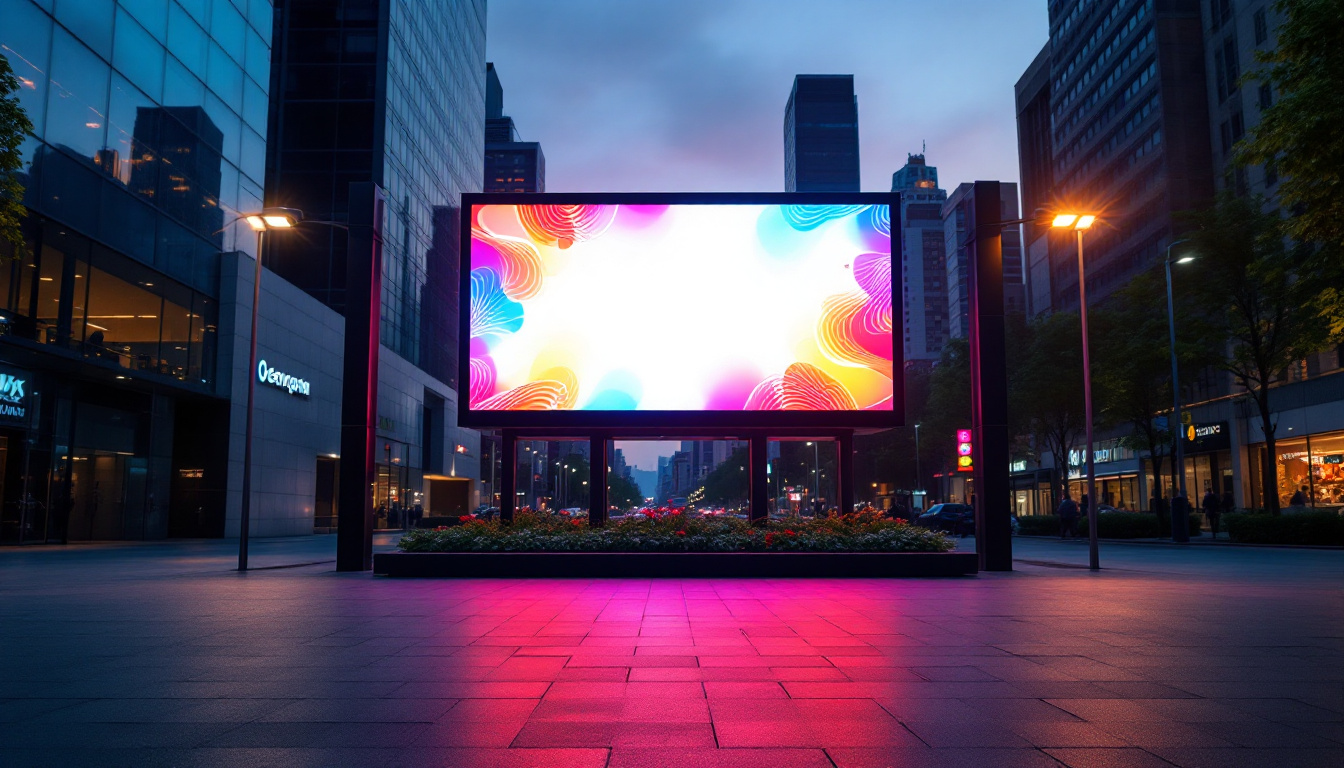In the ever-evolving landscape of marketing, digital advertising signs, particularly LED displays, have emerged as powerful tools for businesses aiming to capture attention and convey messages effectively. These vibrant, dynamic displays offer a range of benefits that traditional signage simply cannot match. This article delves into the world of LED displays, exploring their technology, advantages, applications, and future trends.
Understanding LED Technology
Light Emitting Diodes (LEDs) are semiconductor devices that emit light when an electric current passes through them. This technology forms the backbone of LED displays, allowing for bright, colorful, and energy-efficient advertising solutions. The versatility of LEDs makes them suitable for various applications, from simple indicators to complex video screens. Their low power consumption and long lifespan further enhance their appeal, making them a popular choice for both commercial and residential lighting solutions.
In recent years, the advancements in LED technology have led to the development of smart LEDs, which can be controlled via mobile apps or integrated into smart home systems. This innovation not only provides convenience but also allows for dynamic lighting adjustments based on user preferences or environmental conditions. As a result, LEDs are not just a lighting solution but a critical component in the evolution of smart technology.
How LED Displays Work
LED displays consist of numerous tiny light-emitting diodes arranged in a grid. Each diode can be controlled individually, allowing for the creation of intricate images and animations. The basic components of an LED display include:
- Pixel Matrix: The arrangement of diodes forms pixels, which are the smallest units of a display. The more pixels, the higher the resolution.
- Controller: This device manages the content displayed on the screen, ensuring that images and videos are rendered accurately. Advanced controllers can also synchronize multiple displays for a cohesive visual experience.
- Power Supply: LED displays require a stable power source to function efficiently, often utilizing low-voltage systems for safety and energy savings. Some displays even incorporate renewable energy sources, such as solar panels, to further enhance their sustainability.
Types of LED Displays
LED displays come in various forms, each designed for specific applications. The most common types include:
- Indoor LED Displays: These are typically used in shopping malls, conference centers, and sports arenas. They offer high resolution and vibrant colors, making them ideal for close viewing. Indoor displays often feature advanced technologies like high refresh rates to ensure smooth video playback.
- Outdoor LED Displays: Built to withstand harsh weather conditions, outdoor displays are larger and brighter, ensuring visibility even in direct sunlight. Many outdoor models are equipped with protective casings and enhanced cooling systems to maintain performance under extreme temperatures.
- Transparent LED Displays: These innovative displays allow for visibility through the screen, making them perfect for retail environments where merchandise needs to be showcased alongside advertising. They can create stunning visual effects while maintaining the aesthetic of the space, often used in storefronts and exhibitions.
Furthermore, the rise of flexible LED displays has opened up new possibilities for creative installations. These displays can bend and conform to various shapes, allowing for unique architectural designs and immersive experiences. As technology continues to evolve, the potential applications for LED displays seem limitless, paving the way for a future where visual communication is more dynamic and engaging than ever before.
The Advantages of LED Displays
LED displays offer numerous advantages over traditional signage, making them a popular choice for businesses looking to enhance their advertising efforts. Some of the most significant benefits include:
High Visibility
One of the standout features of LED displays is their brightness. Capable of producing vibrant colors and sharp images, these displays can easily capture the attention of passersby, even in bright daylight. This high visibility translates to increased foot traffic and, ultimately, higher sales for businesses. Moreover, the ability to adjust brightness levels ensures that the displays remain effective in various lighting conditions, whether it’s the glaring sun during the day or the dim ambiance of evening hours.
Dynamic Content
Unlike static signs, LED displays can showcase dynamic content, including videos, animations, and real-time information. This flexibility allows businesses to update their messages instantly, promoting special offers, events, or new products without the need for costly reprints or replacements. Furthermore, the capability to segment content into multiple zones enables businesses to display different messages simultaneously, maximizing the use of the screen space and engaging a diverse audience with tailored information.
Energy Efficiency
LED technology is renowned for its energy efficiency. Compared to traditional neon or incandescent signs, LED displays consume significantly less power, which can lead to substantial savings on electricity bills. Additionally, their long lifespan reduces the frequency of replacements, further contributing to cost savings. This eco-friendly aspect not only benefits the business financially but also aligns with the growing consumer preference for sustainable practices, enhancing the brand’s image in the eyes of environmentally conscious customers.
Versatility in Applications
LED displays are incredibly versatile and can be used in a wide range of applications beyond just advertising. From outdoor billboards to indoor digital signage in retail stores, they can effectively communicate messages in various environments. In addition, they are increasingly being integrated into events such as concerts and sports games, where large screens can display live feeds, scores, and promotional content, creating an immersive experience for attendees. This adaptability makes LED displays a valuable asset for businesses across different industries, allowing for creative and engaging marketing strategies.
Enhanced Customer Engagement
Another compelling advantage of LED displays is their ability to enhance customer engagement. By utilizing interactive features, such as touch screens or QR code integration, businesses can create a more personalized experience for their audience. This interactivity not only encourages customers to engage with the content but also provides valuable data that can inform future marketing efforts. For instance, businesses can track which promotions are most effective or gather feedback directly from customers, allowing them to refine their strategies and improve overall satisfaction.
Applications of LED Displays
The versatility of LED displays means they can be utilized in a wide range of industries and applications. Here are some notable examples:
Retail Advertising
In the retail sector, LED displays are used to promote products, sales, and events. Their ability to showcase vibrant visuals and changing content makes them ideal for attracting customers’ attention. Many retailers use these displays both inside their stores and on the exterior to maximize visibility.
Transportation Hubs
Airports, train stations, and bus terminals increasingly rely on LED displays for real-time information. These displays can provide updates on arrival and departure times, wayfinding information, and advertisements, all while being easily visible to travelers. The dynamic nature of LED technology ensures that information is always current and engaging.
Events and Entertainment
From concerts to sporting events, LED displays play a crucial role in enhancing the audience experience. Large outdoor screens can broadcast live feeds, highlight reels, and advertisements, while indoor displays can create immersive environments with stunning visuals and animations. This application of LED technology has transformed how events are experienced by attendees.
Challenges and Considerations
While LED displays offer numerous advantages, there are also challenges and considerations that businesses must keep in mind when integrating this technology into their advertising strategies.
Initial Investment
The initial cost of purchasing and installing LED displays can be significant. Businesses must weigh this investment against potential returns to determine if it aligns with their marketing budget and goals. However, many find that the long-term savings and increased sales justify the upfront expense.
Content Management
Creating engaging content for LED displays requires a thoughtful approach. Businesses must invest time and resources into developing high-quality visuals and messages that resonate with their target audience. Additionally, ongoing content management is necessary to keep the displays fresh and relevant.
Regulatory Compliance
Different regions have varying regulations regarding digital signage, particularly outdoor displays. Businesses must ensure they comply with local laws concerning brightness levels, content restrictions, and placement to avoid fines or legal issues.
Future Trends in LED Displays
The future of LED displays is bright, with several trends poised to shape their development and application in the coming years. Understanding these trends can help businesses stay ahead of the curve.
Integration with Smart Technology
As smart technology continues to advance, LED displays are increasingly being integrated with IoT (Internet of Things) devices. This integration allows for real-time data collection and analysis, enabling businesses to tailor their advertising strategies based on customer behavior and preferences.
Interactive Displays
Interactive LED displays are gaining traction, allowing customers to engage with content directly. Touchscreens and gesture-based controls enable users to explore products, access information, and even make purchases, creating a more immersive shopping experience.
Sustainability Initiatives
With growing awareness of environmental issues, the demand for sustainable advertising solutions is on the rise. Future LED displays are likely to incorporate eco-friendly materials and energy-efficient technologies, reducing their carbon footprint and appealing to environmentally conscious consumers.
Conclusion
Digital advertising signs, particularly LED displays, represent a significant advancement in the world of marketing. Their ability to deliver high-quality, dynamic content in an energy-efficient manner makes them an invaluable asset for businesses across various industries. As technology continues to evolve, the potential applications and benefits of LED displays are only expected to grow.
For businesses looking to enhance their advertising strategies, investing in LED displays can lead to increased visibility, engagement, and ultimately, profitability. By staying informed about the latest trends and best practices, companies can leverage this technology to create impactful marketing campaigns that resonate with their audience.
In a world where attention is fleeting, LED displays provide a compelling solution to capture and retain consumer interest. As the digital landscape continues to expand, embracing innovative advertising methods like LED displays will be crucial for businesses aiming to thrive in a competitive marketplace.
Explore Cutting-Edge LED Display Solutions with LumenMatrix
Ready to elevate your marketing with vibrant, energy-efficient LED displays? Discover LumenMatrix’s innovative range of LED display modules, designed to captivate your audience and amplify your brand’s message. From Indoor and Outdoor LED Walls to specialized solutions like Vehicle Displays, Sports Displays, and even Custom LED configurations, LumenMatrix is at the forefront of visual communication technology. Experience the future of digital signage and create unforgettable visual experiences. Check out LumenMatrix LED Display Solutions today and transform the way you engage with your audience.

